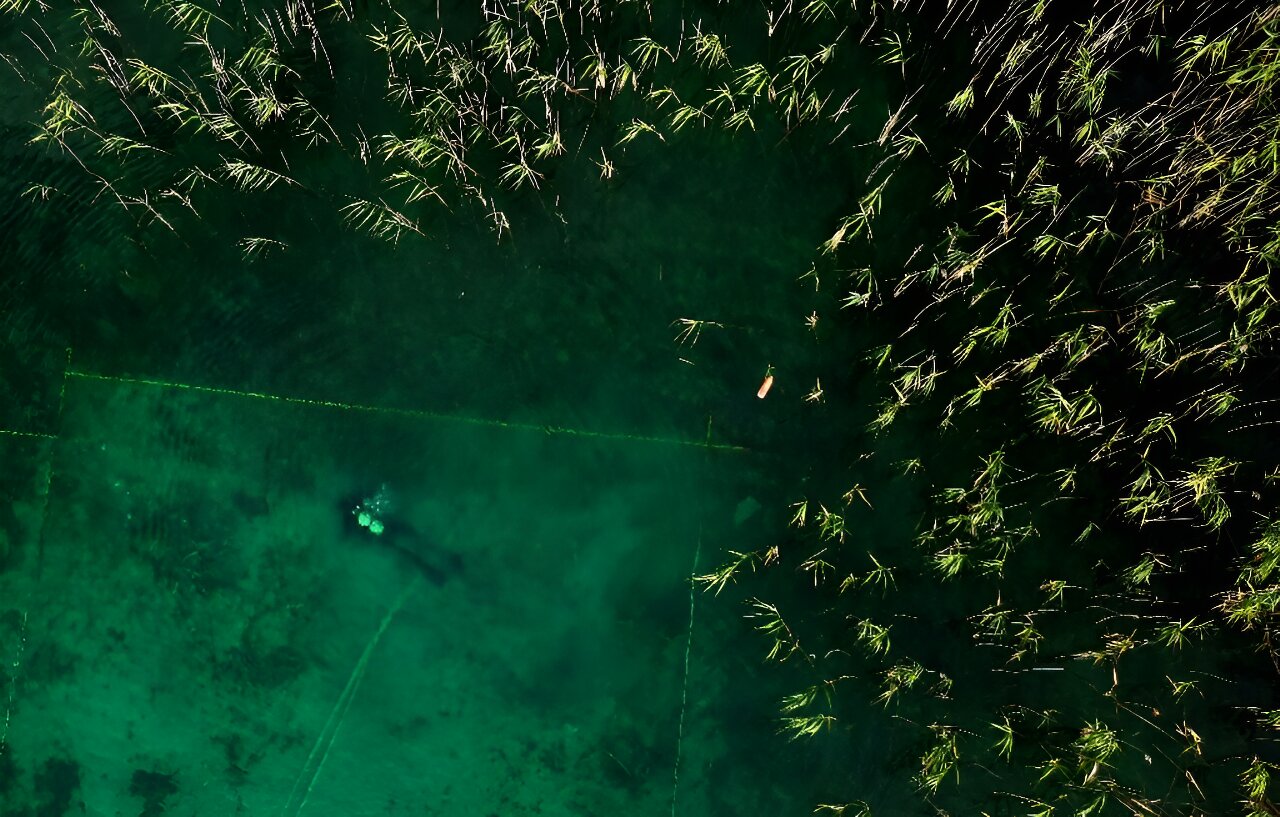Beneath the turquoise waters of Lake Ohrid, the “Pearl of the Balkans”, lies a fascinating discovery that may hold the key to one of Europe’s earliest sedentary communities. Scientists are unraveling the mystery of why this ancient village sought protection behind a fortress of defensive spikes.
Archaeologists believe that around 8,000 years ago, a settlement of stilt houses thrived along the Albanian shore of Lake Ohrid, making it the oldest lakeside village in Europe discovered to date.
Radiocarbon dating places the site between 6000 and 5800 BC, several hundred years older than other known lake-dwelling sites in the Mediterranean and Alpine regions.
“To our knowledge, it is the oldest in Europe,” said Albert Hafner, a professor of archaeology from Switzerland’s University of Bern, in an interview with AFP.
The team of Swiss and Albanian archaeologists, led by Hafner, has spent the past four years excavating the site at Lin on the Albanian side of Lake Ohrid. The settlement is believed to have housed between 200 and 500 people, with houses built on stilts above the lake’s surface or in areas regularly flooded by rising waters.
Fortress of spikes
During recent dives, archaeologists made a remarkable discovery. The settlement was fortified with thousands of spiked planks used as defensive barricades.
“To protect themselves in this way, they had to cut down a forest,” explained Hafner.
But the question remains: why did the villagers need such extensive fortifications? Archaeologists are still searching for an answer to this intriguing mystery.
Approximately 100,000 spikes were driven into the lake’s bottom off Lin, providing a “real treasure trove for research,” according to Hafner.
Lake Ohrid, one of the oldest lakes in the world, has been around for over a million years. Assisted by professional divers, archaeologists have been meticulously exploring the lake’s bottom, uncovering fossilized wood fragments and prized pieces of oak.
‘Like a Swiss watch’
Analysis of the tree rings found in the oak fragments helps the team reconstruct the daily life of the ancient inhabitants, providing valuable insights into the climatic and environmental conditions of the period, said Albanian archaeologist Adrian Anastasi.
“Oak is like a Swiss watch, very precise, like a calendar,” added Hafner.
The lush vegetation at the site makes the work painstakingly slow at times.
“Building their village on stilts was a complex and difficult task, and it’s important to understand why these people made this choice,” said Anastasi.
For now, scientists believe that the village relied on agriculture and domesticated livestock for food, based on the discovery of various seeds, plants, and animal bones.
It will take another two decades to fully explore and study the site, and draw final conclusions. Each excavation trip yields valuable information, enabling the team to piece together a picture of life along Lake Ohrid’s shores thousands of years ago.
“These are key prehistoric sites that are of interest not only to the region but to the whole of southwest Europe,” concluded Hafner.








